
This section of the On Art and Artists collection highlights a number of experimental portraits of artists, and documentaries about the artistic process, from intimate one-on-one close-ups and dialogues, to full studio production studies. These works do not follow a traditional interview format, but are often intended as artworks in their own right. The artists and makers of these Artist Portraits draw artistic inspiration and stylistic license from the collaborators and interlocutors they depict.
J. Morgan Puett is an internationally renowned artist living on a 95-acre compound in the deciduous forests of northeastern Pennsylvania. Touching on ideas of creative domestication, radical pedagogy, and a critical engagement with one’s environment, Ms. Puett describes her unique home, which she calls Mildred’s Lane.
“It (J. Morgan Puett: A Practice of Be(e)ing) tells a unique story of an important artist that truly lives her art. It’s an exclusive biography of a woman who is widely known to the art world but, as yet, undiscovered by our culture.”
—Roderick Angle
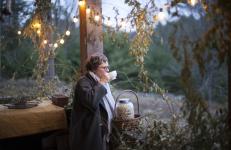
Cecilia Dougherty
Joe, 2018
A portrait of New York author Joe Westmoreland. Joe is reading from his short story Sweet Baby Joe. This video was shot in 2014 in Joe's Chelsea loft, and the reading was recorded in 2016.
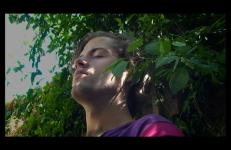
A pioneer of the small-format camera, Andre Kertesz’s photographic vision shaped the course of contemporary photojournalism. Self-taught and non-conformist, he began photographing in Hungary in 1912 and remained there until 1925, at which time he moved to Paris. In 1936 he moved to New York City, where he felt displaced and forgotten. It wasn’t until 1964 that he was “rediscovered” and began showing in London, Paris, and New York. This video was shot five weeks before Kertesz’s death in 1985 at the age of 91.
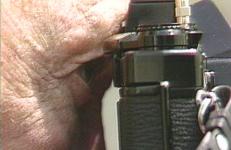
I arranged a visit to poet/novelist Kevin Killian’s South of Market apartment in San Francisco to shoot a portrait of him, and when I arrived he had a guest, poet Cedar Sigo. They had corresponded earlier, but were meeting for the first time, and Cedar agreed to participate in our video shoot. This is perhaps the least planned, most verité and documentary of the videos about writers so far. Our immediate plan was for Kevin to read one of Cedar’s poems and for Cedar to read one by Kevin.
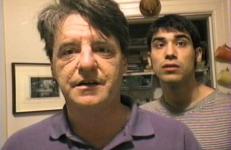
Joyce Kozloff was at the forefront of the 1970s pattern and decoration movement—a feminist effort to incorporate typically “feminine” and popular decorative arts into the fine arts. She has been involved with public art and murals for more than two decades. In this video, Kozloff prepares and installs her mural Around the World on the 44th Parallel, which features sections of maps from 12 cities around the world on the same latitude. The work was constructed at the Tile Guild in Los Angeles and installed at the library at Minnesota State University-Mankato.
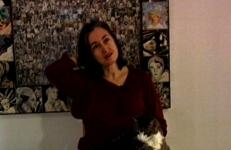
Cecilia Dougherty
Laurie, 1998
Laurie was inspired by Laurie Weeks’ uncanny ability to simultaneously embody her characters and write them from a clear distance. The text in question is just a few paragraphs from a draft of the novel Zipper Mouth, more than ten years in the making, and published by the Feminist Press.

Cecilia Dougherty
Leslie, 1998
In the early 1990s, I went to a reading by Leslie Scalapino at Intersection for the Arts in San Francisco. I could not understand the writing, which can seem difficult and unwieldy to a reader unaccustomed to language poetry, and understood less the more I tried. After a certain point in the reading I stopped trying to figure it out and I let the words seep in. My reward was an effortless understanding of how her poetry works.
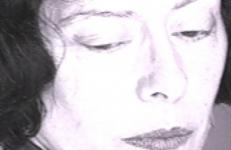
The “greca”, the meander, is the main symbol weaved in the textiles made by the Navarro sisters, from Santo Tomás Jalieza, México. A geometrical form of an endless braid of diamonds, the “greca” represents corn (an entity worshiped by the pre-hispanic civilisations of Mesoamerica). It stands for sustenance, but materialises as well the feminine power of producing abundance and fertility - the textiles displaying this ongoing motives could be read as invocations for life and growth.
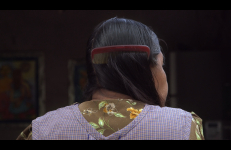
The Luminous Image was an international exhibition of video installations held in the fall of 1984 at the Stedelijk Museum in Amsterdam.
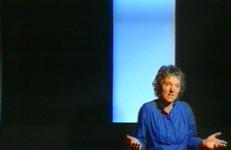
This 12-minute video by Tom Palazzolo and Chicago writer Jack Helbig tells the story of the recently discovered Chicago street photographer Vivian Maier. Though she was unknown in her lifetime, her extensive body of work is rewriting the history of post-World War II American street photography. The video, told from the point of view of Maier herself, recounts her life and work, from her childhood in France to her move to NYC in 1951 and subsequent relocation to Chicago, where the majority of her work was done.
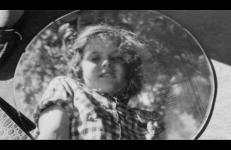
Maya Onoda, a young Japanese artist, transforms everyday materials into art, referring to them as her “nomadic home.” She finds beauty in mundane objects and gives them new life through her creative process. Living away from her home country, Onoda views this approach as deeply rooted in her Japanese culture and influenced by her mother.
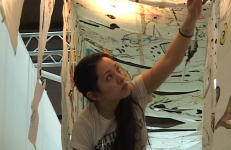
Sara Magenheimer
Medium, 2022
This film originated as an expanded portrait of artist Carol Bove as she created four monumental sculptures commissioned by the Metropolitan Museum of Art. One week after filming began, New York City went into its first pandemic lockdown. Filmed against the backdrop of the progressing pandemic, Medium evolved into a meditation on materiality and the artist as a medium through which ideas move into the world.
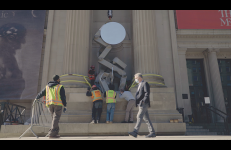
Performance artist/sculptor Ana Mendieta used the raw materials of nature: water, mud, fire, rock, and grass. The consciousness of her politics and the poetics of her expression fill her work with an emotionally charged vision that is powerfully conveyed in this posthumous video profile. Drawing upon the raw spiritual power of Afro-Cuban religion, Mendieta used her art as a ritualistic and symbolic activity to celebrate the forces of life and the continuum of change.

Performance artist/sculptor Ana Mendieta used the raw materials of nature: water, mud, fire, rock, and grass. The consciousness of her politics and the poetics of her expression fill her work with an emotionally charged vision that is powerfully conveyed in this posthumous video profile. Drawing upon the raw spiritual power of Afro-Cuban religion, Mendieta used her art as a ritualistic and symbolic activity to celebrate the forces of life and the continuum of change.





